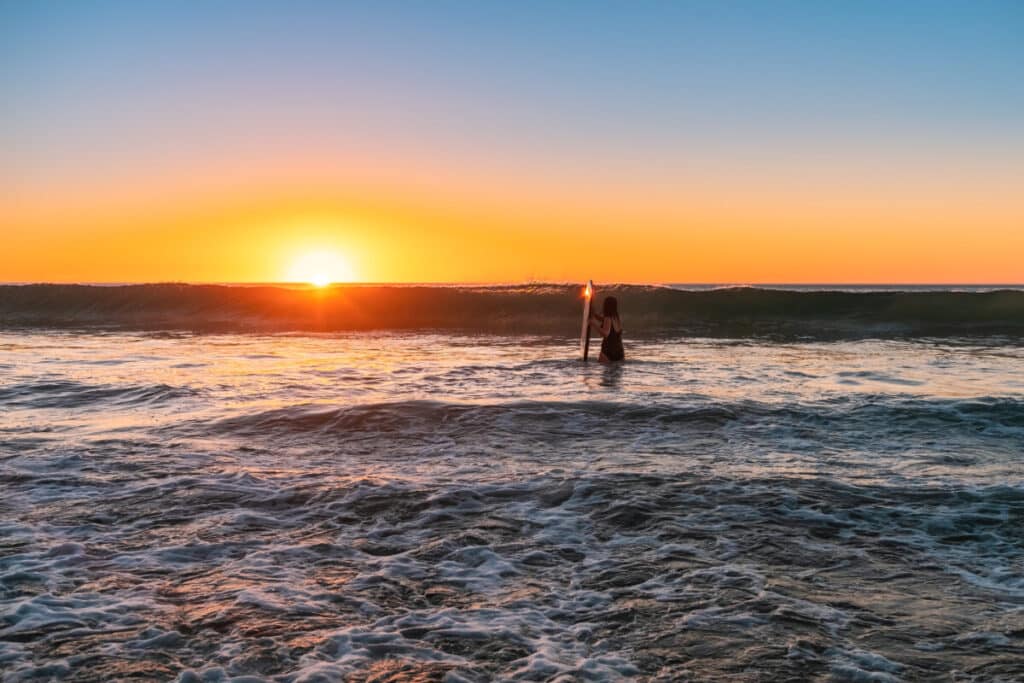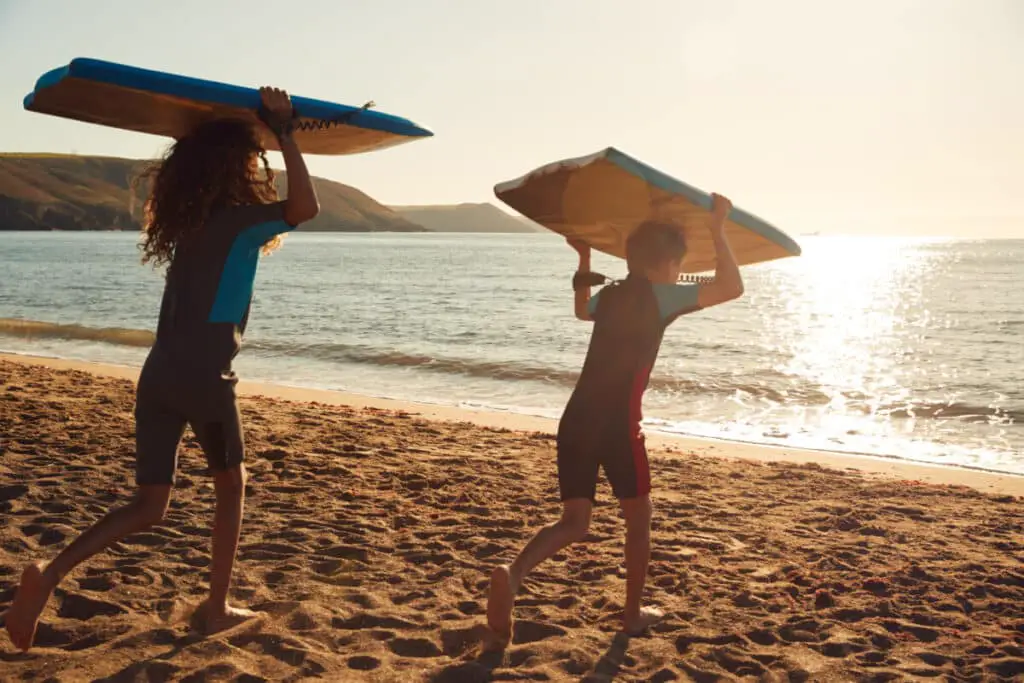
We talk a lot about land sports but slightly less about sports that can be done in the water. Drop-knee bodyboarding is one of those sports that is not only fun but also a great way to practice balance and get in exercise. However, to fully enjoy drop-knee bodyboarding, a person has to know how to do it correctly and safely.
To drop-knee bodyboard, it is important to maintain balance. A bodyboarder must first find a correctly fitting board and fins, then practice their position on the board. The left leg should be bent with the knee supporting the body while the right leg should be up with the foot facing forward.
It may sound a little confusing at first, but in reality, the process of learning how to drop-knee bodyboard is quite simple. The key to learning quickly is to not only practice position, but also to get some good experience out on the waves. Let’s explore a couple of things that could help set you on your way to becoming a pro!
How to Drop Knee Bodyboard Correctly
Okay, so how can you get started on your drop knee bodyboarding (aka DK bodyboarding)?
First, you need to get yourself a good set of fins and, of course, a bodyboard. Make sure you’re getting equipment that is sturdy, durable, and will last you for a while (all you need to know about the types of boards is shown in this article). This might mean spending a good bit of money, but it’ll be worth it in the long run.
You must also buy equipment that fits. The key to being a successful DK bodyboarder is weight distribution and balance. You don’t want to buy a board that’s too small or too large for you to control. The taller and heavier you are, the longer your board is going to need to be (check out the size chart).
Before you hit the waves, you’re going to need to practice your position. This position ought to be in a one-knee kneeling position. The left knee should be firmly planted near the rail of the board. It’s okay if your foot hangs off a little in the back as long as it’s not enough to throw you off balance.
Once you have practiced getting into a comfortable, stable position on the board, it’s time to practice on the waves. And keep in mind that as you do this, you’ll be able to get more comfortable with moving positions, plus you’ll be able to tell where exactly to position your feet so you can stay perfectly balanced.
When you first start boarding for real, you should start with mushy waves. For those of you out there who are new to the bodyboarding world, mushy waves refer to waves that are calmer and have a smaller curve. This will make it easier to get used to the movement of the ocean.

Paddle out to the sea on your stomach, the way you would when surfing. Once you’re ready to take your DK stance, make sure to plant your knee first, then slowly bring your other foot up. It will take some practice to get down, so it’s okay if you’re a little wobbly at first. The more you practice, the sooner you’ll be able to tackle larger waves.
Drop-Knee Boarding Safely
By this point, you should hopefully have a good idea of how to DK bodyboard properly. Now it is time to address the topic of how to DK bodyboard safely. Here are a few things every bodyboarder (whether experienced or not) should know.
When bodyboarding, it is generally a good idea to bring somebody with you.
Bodyboarding-induced injuries can be quite serious, and if you were to somehow get trapped under the water, it would be helpful to have someone there to help you get back above the surface. Plus, it’s always more fun to bodyboard with a friend nearby.
You should always make sure your equipment is in good repair.
This should include wax on the surface of the board; having it there will help you gain and maintain helpful balance. If there are any cracks or other types of damage on the board, you might want to get another one before you start bodyboarding again. Always remember that the Bodyboard will be your floating device e.g. in case you get caught in a rip current.
Therefore it is clear that you need to have a quality leash which makes sure that you never lose the bodyboard while surfing.
You should also make a point of checking the weather and the swells before you head out and hit the waves.
It doesn’t pay to be cocky and think you can bodyboard during rain and shine. If the weather is severe enough, you’ll risk getting hurt out there. Bodyboarding and surfing-induced injuries can prove to be pretty serious.
You can, of course, go in somewhat windy conditions if you have adequate experience. However, you should still always play it safe. If you have any doubts about whether you’ll be able to handle the water, you may need to postpone your trip to the sea.
Taking a Break: Avoiding Injury
Similarly, you should pay close attention to your body and your health when you go DK bodyboarding. It’s not as though bodyboarding is the most strenuous form of exercise out there, but it can still do a number on you if you go often enough.

According to the National Library of Medicine (NLM), spinal cord injuries and back pain are relatively prevalent among bodyboarders. Spinal Cord Injuries most often happen in a wipe out, when the boarder gets caught in a wave and hit den ground with the full force of the water. Normal back problems can be caused by the unusual load onto the back during the activity. Again, there is definitely no reason to be afraid, just make sure you are 1.) physically prepared, 2.) take time to rest yourself up, and 3.) make certain you follow the safety instructions listed above.
It is therefore advisable that you do activities that keep your body strong and in good shape. Make sure that you strengthen your upper body and back, so that you can maintain your stability while surfing.
In addition to normal bodyboarding, DK bodyboarding can be particularly hard on the knees. Make certain to rest your knees as well as work them well so they stay strong. At the end of the day, you know your body and what it can handle better than anyone else does.
That said, you know exactly how much preparation and rest you’ll need after bodyboarding and exercising. As long as you take good care of yourself, you will be able to practice DK bodyboarding as long as you like.
Which Board to use for Drop Knee Bodyboarding?
Generelly you can use a good quality Bodyboard, especially if it is one with stringers, for Drop Knee Bodyboarding. However, you should take the correct sizing of your board into account. If you are interested in learning which Bodyboards are great choices especially for DK Bodyboarding, you should have a look at our Top-List.






